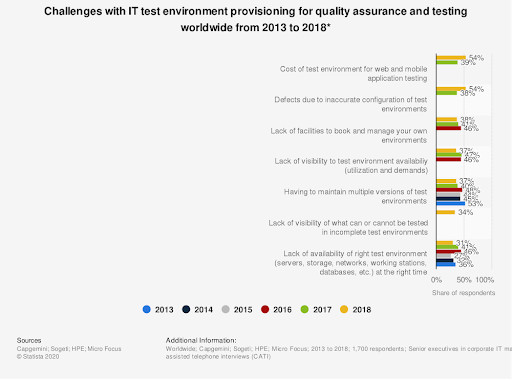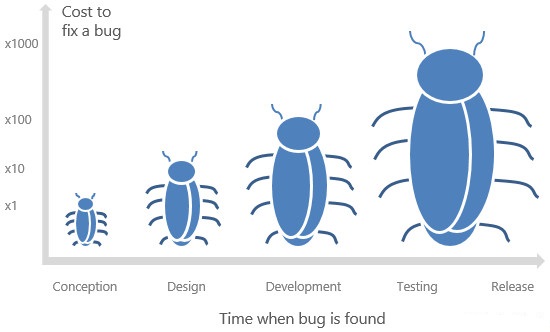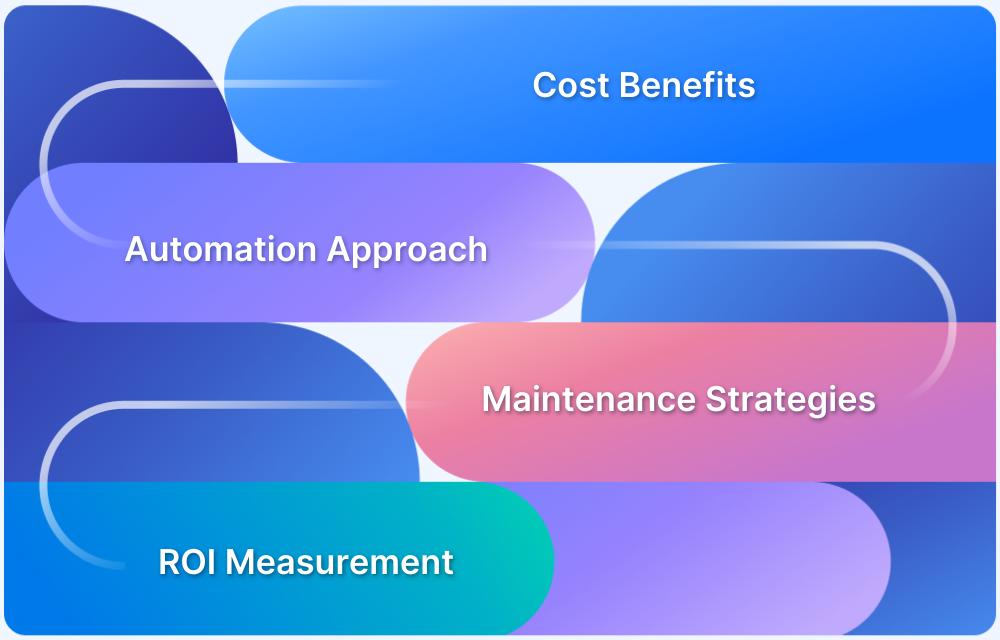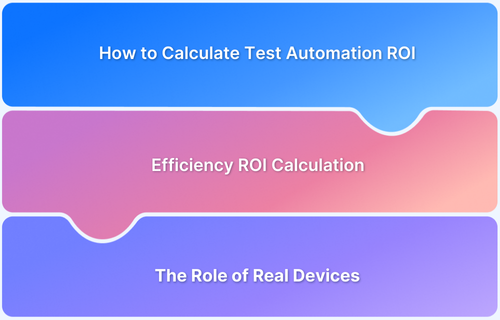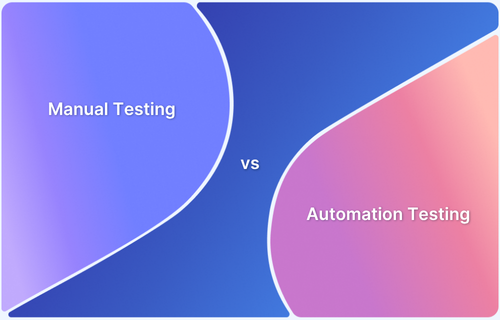Software testing is both mission-critical and cost-intensive. Historical failures like NASA’s Mariner 1 (lost due to a single missing hyphen, costing $18M) prove why skipping testing can be catastrophic. Despite accounting for nearly 23% of IT budgets, many organizations still underinvest in structured QA.
The cost of testing spans four categories—Prevention, Detection, Internal Failure, and External Failure. Optimizing each area can dramatically improve ROI and accelerate delivery. Strategies include:
Overview
Cost of Testing
- Prevention Costs: Train and align dev + QA teams, adopt test-first approaches, and ensure tool/framework choices fit team skill sets.
- Detection Costs: Transition to automation, calculate ROI using savings vs. investment, and maximize efficiency through parallel testing. Testing on BrowserStack’s real device cloud eliminates expensive in-house labs and ensures accuracy across 3000+ real devices and browsers.
- Internal Failure Costs: Embrace Shift-Left testing to catch bugs early in the SDLC when fixes are cheaper.
- External Failure Costs: While impossible to predict, robust QA reduces post-release risks that damage revenue and reputation.
By balancing these costs, organizations can ensure faster releases, higher product quality, and stronger customer trust—all while staying within budget.
Why is Software Testing Critical?
A particular example was the explosion of the Mariner 1 spacecraft back in 1962. It was the first attempt by NASA to launch a spaceship to Venus, but a software bug caused the rocket to go off in an incorrect direction, and the rocket had to be destroyed after 290s of flight. This major mishap could have been avoided only if a single hyphen in the code had been removed.
Let alone the loss of prestige to NASA, this singular error cost them USD 18 million at the time.
This example makes it crystal clear that though software testing can be time-consuming and seen as “expensive” by some, the alternative is far worse. It is, in fact, the most critical and valuable stage of the testing process and offers ample opportunity for the organization to deliver a product optimized for business and customer success.
However, this opportunity is often not fully appreciated due to concerns over “cost”.
A global IT survey of executives has led to more than 50% of the respondents identifying software testing cost as the biggest challenge in product development. In 2019, a panel of CIOs and other senior management professionals estimated that 23% of the software budget was allocated to testing, with costs only set to increase.
Thus, it is imperative for organizations to get the most out of their software budget in order to maximize efficiency and deliver an optimum product on time.
Why is Software Testing Expensive
The costs incurred as a result of software testing can be broken down into four major areas of expense.
- Prevention Costs: The Costs incurred to train developers who do not create “buggy” codebases by writing maintainable and reusable code. Or, in a worst-case scenario, hire replacements of such personnel who have similar skill sets.
- Detection Costs: This is the cost to create test cases and scripts and set up the test environments to be able to detect defects.
- Costs from Internal Failure: The cost required to fix the defects detected before the product is delivered at scale to the customers
- Costs from External Failure: The cost required to fix the defects after product delivery has been completed.
Optimizing each of these costs can help improve the ROI on Software testing exponentially and allow organizations to reap the maximum benefit. The next section will discuss these in detail.
Read More: Calculating Test Automation ROI: A Guide
Steps to optimize the software testing budget
Here are some measures that can help you optimize your software testing budget and make the
Optimize Prevention Costs
Training and upskilling developers to write bug-free code can rely heavily on the individual. However, it is important to consider the following factors:
- Are the developers and testers on the same page wrt the requirements:
The most common complaint from developers takes the form of “it works fine at my end”. This can be caused by an incomplete understanding of the System Requirements by either party. Also, a test-first approach in Agile sprints can help in ironing out the basics about the system being built, the components being tested, and how the tests will be executed.
All of this can lead to a significant reduction in bugs caused due to the dev team, considering the project completed as per their understanding. However, it might still be too “buggy” for the QA team to roll out.
- Is the technology suite in use for the Application Under Test (AUT) optimal in terms of the existing skill set of the tech team?
While it is always good to jump on the latest technology bandwagon, it is important to understand whether the current tech team is capable of delivering on that platform. All tools and frameworks used need to be aligned to the core skill set of both Dev and test teams.
For example, if the team is better versed in Python, using a JS framework might not make much sense if there are alternatives available.
Optimize Detection Costs
Detection costs hinge on two major points:
- Costs to create scripts or tests that lead to the detection of actual bugs
Transitioning from Manual to Automated testing is an extremely key step in getting the most value out of any software testing budget.
The best way of calculating your test automation ROI can be found from the formula given below:
ROI = Savings / Investment
In this scenario, Savings are the budgetary costs saved by replacing manual tests with automated scripts.
Investments are the costs required to set up the automation test scripts.
To explain this further, Savings can be broken down into
Savings = (time to run a single manual test – time to run the same test in automation) * number of tests * number of test runs
And, Investment can be shown as,
Investment = (time required to build frameworks + maintenance cost + (time to code one tests X number of tests))
Given the fact that
- The time required to build frameworks can be evened out to a fixed value based on the test team in question.
- The Maintenance Cost can also be standardized based on the size of the project in question.
- The time required to write a test script can also be averaged out on the basis of previous tests written for similar tasks.
- And the number of tests depends on the size of the projects.
Investment can be optimized on the basis of the type and scope of the project, it is the savings part that needs to be stressed on for maximum ROI.
Automation can be further optimized by decreasing the time taken to execute a test using an automation script.
Using Parallel testing allows the test team to run tests on multiple devices, thereby reducing test times, generating faster results, and meeting tight deadlines.
Pro Tip: Try BrowserStack’s Parallel test calculator to understand how faster application releases can be facilitated with less waiting time for builds.
- Costs for setting up the environments for testing the Application Under Test with these scripts
Emulators and Simulators are often used to test projects in virtual environments for easy availability and lower price tags. However, these cannot provide conclusive results due to some inherent challenges.
An iOS device will have a run speed dependent upon the number of computing resources online or present locally on the test farm. Whereas Android virtual devices created with non-x86 ABIs will always run slower than real Android devices.
Given that one of the most time and cost-consuming methods to perform cross-browser testing at scale could be to set up in-house digital labs or have large stacks of real devices lying around, Virtual labs offer an easy and convenient way out.
BrowserStack’s real device cloud empowers QA teams to test on 3000+ real devices and browsers on-demand for remotely testing applications. This removes the need to set up expensive infrastructure around on-site labs. Popular integrations also encompass major frameworks like Selenium, Cypress, Playwright, Puppeteer, Appium, Espresso, etc.
Optimize costs from Internal Failure
In conventional Software Development Processes, testing is usually done at the very end of the pipeline. However, the later a bug is detected in such a process, the greater the cost.
The Shift Left testing approach takes testing to the very “left” or beginning of the SDLC timeframe and seeks to identify and eliminate bugs as soon as possible.
Though unfortunately, there is NO WAY to minimize Costs from External Failure, as once a buggy product has been launched, there is no telling how many customers it can affect and in what way.
Thus, it is best to have an optimal Test Strategy to avoid losses later on.
To Sum Up,
Software Testing is critical to the success of any software product, and while there are serious concerns about the costs incurred for thoroughly testing a piece of software, there are ways and means to extract the most from the same.


